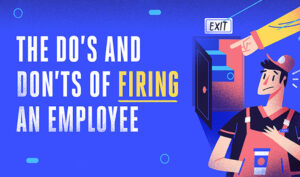
15 Things to Avoid When Letting Employees Go [Infographic]
Especially during our prolonged pandemic, and right before we begin the holiday season, firing someone is not fun. The impact on the person getting fired

Especially during our prolonged pandemic, and right before we begin the holiday season, firing someone is not fun. The impact on the person getting fired
Breakups. Graduations. Funerals. Parting ways is always difficult; work is no exception. That’s why it’s important for HR to have the tools to keep morale
Letting employees go is never easy. But sometimes it’s necessary. And when it’s necessary, you know. The TalentCulture community discussed issues surrounding the firing process. Here are suggestions to consider…